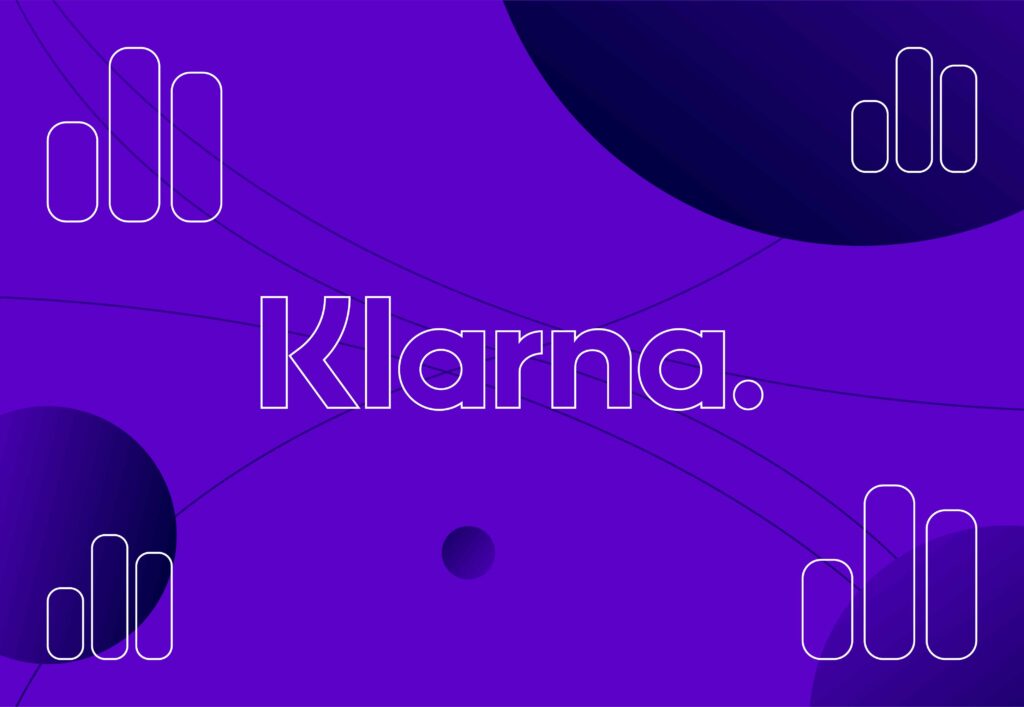
25 stats about Klarna

In today’s fast-paced digital world, people want an easy and flexible shopping experience, both online and in person. Klarna offers just that. The fintech company is one of the industry’s leading Buy Now, Pay Later (BNPL) businesses.
Klarna allows consumers to split the cost of a payment into multiple instalments whether that is an online purchase or in a shop. All a consumer has to do is choose Klarna at the checkout and then choose a payment plan that suits their needs. It is an effective way to help people manage their money and helps businesses boost conversions, improve customer experience and boost engagement. It’s a win-win!
The BNPL industry is changing the e-commerce world as we know it. Therefore, it’s important that you stay updated and understand the power BNPL services, like Klarna, hold.
In this blog, I will break down key stats about Klarna’s history, growth and success. As well as that we will explore how Klarna helps businesses thrive, why Klarna reshaped the BNPL industry and what the future looks like for Klarna.
If you are looking for a way to enhance your digital marketing, get in touch. Our award-winning team are ready to help you achieve ultimate digital success.
Stats on Klarna

- Klarna was founded in 2005 by students at the Stockholm School of Economics
- In 2024, Klarna had 31 million monthly active users
- Klarna’s revenue increased by 22% from 2021 to 2023. The revenue was $2.26 billion in 2023.
- In 2024, the gross merchandise volume was $93 billion
- Klarna processes around 2.5 million transactions each day
- Klarna’s first time being profitable since 2019 came in 2023 when its net income was $155 million
- Klarna has 85,000,000 active consumers
- Klarna’s total number of merchants: 600,000
- Klarna’s total number of transactions per day: 2,500,000
- Klarna has around 3,800 employees
- Over 37 million Klarna users in the US, which makes it Klarna’s largest market
- Klarna consumers in Finland and Sweden are more likely to say they use Klarna than consumers in other countries
- The percentage of cashback does vary per retailer and can be as high as 10%
- Klarna offers flex accounts with 2.95% interest
- It is available in 26 countries
- Klarna Checkout led to 30% increased conversions reported from retailers offering KCO
- Klarna Checkout led to 45% increase in average order value reported from retailers offering instalments.
- Klarna Checkout led to 20% higher customer purchase frequency reported from retailers offering pay later options.
- 85% of shoppers who use Klarna say it’s a better experience than other online checkouts.
- 99.92% of Klarna purchases are seamless, with no customer complaints.
- Klarna is active in 45 markets
How Klarna works (+ how it relates to digital marketing)
As mentioned above, Klarna is a BNPL service where consumers can purchase a product and split the payments into different interest-free instalments. It essentially gives the customer more financial freedom and less financial strain. Klarna makes the consumer journey quicker and more seamless, which makes shopping more accessible for consumers.
By making the shopping experience more positive and convenient for shoppers, Klarna helps businesses increase conversion rates and lower cart abandonment. It also helps build brand trust and loyalty. It is important to stay competitive in the retail industry, so businesses that offer Klarna as a payment option gain an advantage in terms of customer satisfaction.
In terms of digital marketing, Klarna is a powerful way for businesses to increase online presence and brand awareness. It is a way for businesses to attract new customers and reach audiences. Not only that but Klarna also provides brands with the opportunity to personalise promotions and gather insights that can help businesses target their audience effectively.
If a business is trying to tap into a budget-conscious audience, who are possibly younger, Klarna is an effective way to appeal to different demographics and create long-lasting consumer relationships.
Who is using Klarna

Research shows that younger generations (millennials and GenZ) are more likely to check out using Klarna. 54% of millennials say they use BNPL services and half of Genz respondents said the same.
This could be because Klarna appeals to more money-conscious individuals (e.g. typically younger people trying to better manage their money) but another reason that Klarna appeals to younger generations is that BNPL services invest heavily in social media advertisement campaigns.
Klarna in particular have hired brand ambassadors who appeal to a younger generation such as Paris Hilton and Snoop Dogg. Using brand ambassadors is a powerful marketing strategy to increase brand awareness, enhance credibility and build a strong relationship between a brand and its target audience.
Why are businesses using BNPL services like Klarna?

The e-commerce industry has rapidly grown in recent years. Approximately 20% of all retail sales happen online and 95% of buying is expected to happen online / through e-commerce businesses by 2040. As the e-commerce industry grows in popularity, so does the competition for businesses to stand out in a crowded market. Klarna believes that by using the service, business sales could increase by a further 30%. Therefore, from a business perspective, having a service that will increase sales and differentiate you from competitors is a must – that’s why so many companies use it.
Businesses may worry that by using Klarna there is a chance they may never receive the full payment from customers. However Klarna is one step ahead – when someone uses Klarna, the service pays the business the full amount and then the customer is ultimately paying Klarna back. If a customer doesn’t fulfil the payment, Klarna will charge late fees, report or ban the customer from the service. Despite taking a small fee, there has been no real drawback for businesses when it comes to using Klarna.
Cart abandonment is a huge issue for the e-commerce industry. Let’s face it – we are all guilty of browning products online, adding them to a basket and then never actually buying them. Swrve says that cart abandonment adds up to $4 trillion each year. There may be plenty of reasons for cart abandonment but Klarna does help those customers that abandoned the cart because they can’t pay the full amount straight away.
To understand more about the BNPL industry, I have broken down some key BNPL stats:
By now pay later stats
- In 2024, over 350 million people use Buy Now Pay Later services across the world. By 2028, this number is predicted to increase to 670 million.
- As of 2025, 2 in 5 UK adults have used Buy Now Pay Later services at some point which is approximately 22.6 million people.
- 1 in 10 UK adults intend to use BNPL at some point in the future.
- The global Buy Now Pay Later was valued at $112.7 billion in 2022 and is predicted to reach $725.36 billion by 2030.
What are the challenges Klarna faces?
While Klarna has grown rapidly and gained popularity among consumers and businesses, it also faces challenges and criticisms.
One huge concern for many people is that BNPL services, such as Klarna, can be an easy way to get yourself into debt. Some critics argue that Klarna promotes impulsive spending and encourages consumers to make negative purchase decisions. These concerns prompted the Financial Conduct Authority (FCA) to subject BNPL services to the same regulations as traditional creditors, so now they must complete affordability checks and customers must be treated fairly.
Another challenge that Klarna faces is the increased competition in the BNPL industry. Plenty of fintech companies, banks and credit card companies are launching their flexible payment services. Because of this, Klarna must continue to develop and innovate its service, so it remains user-friendly and beneficial for users/businesses.
Another important development in Klarna’s business journey is the recent adoption of AI-driven customer service which has led to a significant reduction in their workforce (explained in more detail in the section below). Therefore, concerns have risen over job displacements and whether AI or human customer support should be invested in more.
Despite Klarna’s challenges, Klarna continues to develop and use AI-powered innovations to enhance the user experience. Klarna must address these concerns and criticisms moving forward to ensure sustainable growth for the company and maintain a positive brand reputation.
Who are Klarna’s main competitors

Klarna isn’t the only BNPL service provider on the market right now. Let’s explore some of its competitors:
- Afterpay: It allows users to split payments into 4 instalments every two weeks whereas Klarna is more flexible as it offers longer-term financing (up to 36 months). Both Klarna and Afterpay are available in a range of countries and are integrated with major retailers in the industry.
- Affirm: Like Klarna, Affirm offers monthly payment options but Affirm focuses on both interest-free and interest-bearing options. Affirm tends to be used for larger purchases whereas Klara is used for day-day spending.
- Sezzle: Sezzle uses a ‘soft credit check’ to ensure customer eligibility, so it does not affect user credit scores whereas Klarna does soft and hard credit checks. Sezzle is more important for small – mid-sized businesses whereas Klarna is used by larger high-end merchants.
- Paypal Credit: Paypal offers a traditional credit card-like structure compared to Klarna which uses BNPL fixed payments and no credit.
What the future of Klarna looks like
It’s clear that traditional credit cards could be on their way out (especially with younger generations) and AI is no longer something the world can hide away from. Both of the above are changing the way payments are made and how financial services work.
Stats show that credit card usage for retail purchases has dropped by nearly 20% and debit card usage has increased to just over 38% of transactions. This shift represents a shift in consumer behaviour and mindset. Virtual cards and digital wallets are now the new normal. BNPL services are stepping in to fill the gap of traditional credit cards; 62% of BNPL services actually think that they could replace credit cards entirely.
As mentioned, AI is reshaping the future of many industries, and there is no doubt that the future of fintech will be revolutionised by AI. Klarna, in particular, developed an AI assistant to improve its user experience. It manages a range of tasks for the company e.g. customer service and managing refunds/returns. When it was first introduced in 2024, the assistant engaged in 2.3 million conversations (two-thirds) of Klarna’s customer service interactions, within the first month. The work the AI assistant did equates to the work of 700 employees and the customer experience was scored more positively when compared to human customer service. The company has made plenty of developments to its AI assistant since its launch and I doubt it will stop here.
Klarna’s Co-founder and CEO, Sebastian Siemiatkowski, says ‘As Klarna continues to discover applications for OpenAI’s tech, there’s the potential to take the business to new heights. We’re aimed at achieving a new level of employee empowerment, enhancing both our team’s performance and the customer experience.’
Of course, the adoption of AI has and will continue to have notable effects on the Klarna workforce. The firm already cut the workforce from 5,000 to 3,800 in 2024 and Klarna would like the reduce that number to 2,000.
Despite cutting the workforce, Siematkowski has explained that AI has helped to improve revenue per employee and position the company for a potential valuation of $20 billion in 2025.
Given Klarna’s success with AI adoption, the future of fintech could include ALOT of AI. Klarna aims to increase AI adoption to improve employee performance and customer experience. As AI becomes even more affordable and desirable to businesses, it is possible that smaller businesses may also adopt this approach.
Want support with your e-commerce business?
If you are looking for support with your digital marketing then get in touch. At Embryo, our team is made up of talented SEO, paid media, PR and website developer professionals. We can help create and implement data-driven strategies that will drive results and help you achieve your goals.
Get in touch with us and let’s work together to help you achieve success.



